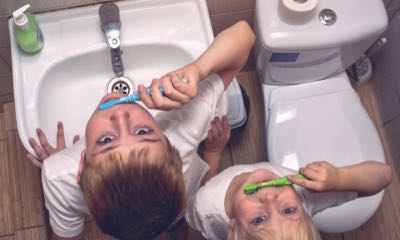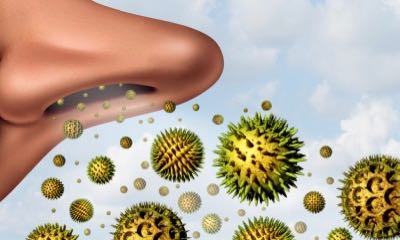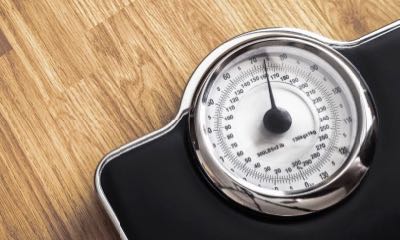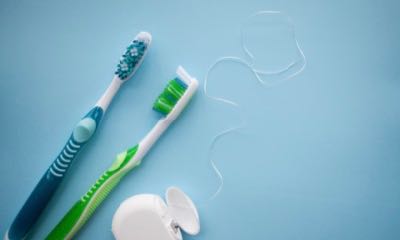Healthy family habits are key to raising healthy kids. Children look up to their parents as role models. So, it’s important to give them an example of a healthy lifestyle to follow.
Healthy eating and exercise are two habits lots of individuals focus on. And while personal health goals are great, getting your family on board is even better. Also, broadening your family’s scope of healthy habits to include all aspects of your lives is a good idea. Include habits like brushing your teeth, wearing a helmet, and washing your hands.
As kids get older, it can be challenging for them to reverse the habits they’ve already acquired. So, don’t wait another second to work on healthy habits with your kids. They’ll pick the good habits up fast and have a lifetime to practice.
Flip through the slideshow to find 19 ideas to work on as a family. Pat yourselves on the back for the work you’re already doing. Make a note of the suggestions you want to tackle together.
- Make Your Bed
This simple task often gets overlooked, but it’s a great habit to get into. A freshly made bed helps you and your kids start the day on a positive note. And it makes for a neat and relaxing bedroom at the end of a long day.
Track how often you each make your bed on a chart for your whole family to see. You can have fun making this a habit by having bed-making races or competitions. Showing your kids your well-made bed will help them understand how important this daily ritual is to you.
- Wash Your Hands
Hand washing is perhaps the most important habit for your health. By washing your hands after using the bathroom and before every meal, you keep germs at bay. So, it’s important to teach your family how important hand washing is for staying healthy.
Parents should remind kids often throughout the day to wash their hands. Little kids who have trouble washing their hands on their own may need a stool to help them reach the faucet. Also, show your children how to properly wash their hands by scrubbing with soap and rinsing with warm water for at least 20 seconds. Germs can spread from person to person and they can make people sick. Teaching this important habit can help stop the spread of unhealthy germs to help families and communities stay healthier.
- Eat Breakfast Every Day
Your family can start every day with a healthy habit by always eating breakfast. The morning meal is often the first thing to go when a busy day looms. Take a stand for healthy habits and make sure your family eats breakfast every day.
This is one of the best ways to combat overeating throughout the day. Breakfast fills you up early and delivers sustaining energy until lunch. If you need quick breakfast ideas to help get you in the habit, try hard-boiled eggs, a piece of fruit, or a slice of whole wheat toast with nut butter.
- Brush Your Teeth
Little kids might have a hard time remembering to brush their teeth twice a day. But this habit is critical for maintaining good dental health.
That’s because brushing your teeth whisks away plaque and bacteria deposits. Not allowing this build up on your teeth helps you maintain your oral health.
So, make it a habit to brush your teeth twice a day to keep your teeth and gums in shape. Two minutes per brushing session is the recommended amount of time. Try placing a timer in the bathroom to help your kids hit the two-minute mark. You can also sing a song or playing music to make brushing more fun for everyone.
- Tidy Up
Keeping your living space neat and orderly is a healthy habit everyone in your family can take part in. Spending time at home is always more pleasant when all your belongings are in the right place. And having a clean house can help take your focus off clutter and put it towards your loved ones and healthy living.
Show your little ones where their toys, books, clothes, and shoes can be put away. Help kids get in the habit of returning items when they’re finished. Cleaning up is also a great way to teach responsibility and respect for your belongings.
You can tidy as a team by setting a timer and cleaning for 10 minutes. Race to see how fast you can get your house in order. Give kids different jobs each day so they can learn to sweep, wipe, and dust. They’ll thank you when they’re on their own and know how to keep their homes clean.
- Turn Off the TV
Watching television can use up a lot of your family’s free time. Lounging can be relaxing in short sessions, but long spells can stall your productivity. It’s hard to be active and work on healthy living when the TV is on.
So, limit your TV time to an hour a day. Turn off the TV and find better ways to unwind as a family. Board games are just as fun and engage each family member. Plus they help kids build reasoning and problem-solving skills. Be a good example to your kids by suggesting you play together when they’ve had enough TV for the day.
You might even notice your sleep improve when you cut down on television. Spending time away from screens lets your eyes relax, keeps you from blue-light exposure, and helps you fall asleep easier, too.
- Get Moving
Speaking of ways to relax and play as a family—exercise checks both boxes. Having a regular exercise routine is a great habit to work on together. Instilling a love for exercise in their youth can set your kids up for good, lifelong physical fitness.
The movement doesn’t have to be complicated to get the benefits of regular exercise. That can be a driveway basketball game or dancing to your favorite songs. You can spend time together and get fit when you move as a family.
Shoot for 30 minutes of activity every day. If your schedules are tight you can sneak exercise in by walking to school or riding your bike to work. Brainstorm ideas as a family that’ll help you get in the habit of exercising daily.
- Find Adventure Together
Families that play together stay healthy together. Going on family-friendly adventures can make exercise a bonding experience for you and your loved ones.
Recreating in nature is a fun way to check out local scenery and spend time as a family. Hiking, biking, fishing, and rock climbing are a few outdoor adventures your family can embark on.
- Wear Protective Gear
Safety is part of healthy exercise habits. Demonstrate the safe way to play by wearing protective gear when appropriate. If your kids see you gearing up for a bike ride, they’ll want to do the same.
Make it a habit to put on your helmet, shin guards, or elbow pads before you go out to play. It’ll save you from getting injured and show your kids how to stay safe.
- Stay Protected From the Sun
Sunscreen is the best way to protect your skin from sun damage. Kids and adults alike need sunscreen before playing outside. Make applying it automatic.
Show your kids how to put on their own sunscreen. You can find kid-friendly, mineral-based sunscreens that are gentle on their delicate skin. Remind each other to reapply every two hours when you’re outside. And get in the habit of wearing a hat to stay protected from the sun.
- Eat the Rainbow
Healthy eating is an excellent habit to work on as a family. You eat together often, so start focusing on healthy foods as a team.
Looking at the color of your food is a great way to make sure to get the nutrients your family needs. Whole foods are vibrant. Bright reds, deep purples, and dark greens make food interesting to look at and good for you.
The color of your fruits and veggies tell you what kinds of vitamins they can add to your diet. Yellow-colored foods are great sources of vitamin C. Vitamins A and E live in red and orange foods. Green foods pack calcium, iron, and other important phytonutrients.
Work together to put many different colors on the dinner table. A salad with mixed greens, tomatoes, avocado, red onion, yellow peppers, and cucumbers hits lots of colors on the spectrum and is nutritious to boot.
- Skip Soda, Choose Water
This is a great, simple healthy habit to start with. That’s because healthier choices are readily available and easy for adults and kids to understand.
You already know soda and sugary drinks ruin your teeth and diet. So, make the switch to water (or milk for kids) as a family. To help this habit stick, keep soda out of the house. Order water with your meal (and milk for kids) when you eat out. Show your kids you mean business by staying clear of soda and providing healthier options that support growing kids.
- Try New Foods
If your family’s go-to meals are getting stale, try expanding your palette. It’s hard to keep up healthy eating when you have the same foods over and over. Fatigue sets in. Luckily there are lots of ways to change it up and keep healthy eating interesting.
Adding spice to your food will change the flavor dramatically, without altering its health benefits. Garlic, cumin, pepper, and paprika add a little spice to vegetables like sweet potatoes. Turmeric, parsley, or cilantro in brown rice amp up the flavor.
You can also try preparing some of your favorites in a different way. For instance, oatmeal is a great option for breakfast. But during warmer months you might not feel like chowing down on a bowl of hot food. Rather than abandoning healthy oats for a donut or pastry, try overnight oats instead.
To make overnight oats, mix a handful of oats with yogurt, milk, chia seeds, and a drop of honey. Let it sit in the refrigerator overnight. When it’s time for breakfast, you have a cooler option. You can even slice bananas or chop berries to add to your oatmeal parfait.
- Plan and Prepare Meals Together
When your family has a meal plan, you’re more likely to stick to eating healthy. Life gets busy and things come up. But don’t let convenience overwhelm your healthy eating habits. Try prepping food in advance so you have a quick, healthy option on hand.
Kids can help by choosing what meals they’d like to have for dinner. Encourage them to come up with meals that include a lean protein, veggies, and whole grains. Write your dinner plans down on a calendar in plain view. That way everyone is aware of what meal they’ll be enjoying that day.
You can also meal prep as a family. Cooking protein in bulk is a great way to speed up the dinner-making process. Your kids will love being included in the kitchen. Show them how to wash vegetables and season proteins like chicken or fish. They’ll relish the responsibility of helping make dinner and enjoy their food even more.
- Learn to Read Labels
It’s tricky to understand what the labels on your food tells you. So, sit down with your family and figure it out together. When you learn how to read the nutrition labels on your favorite snacks, it’s easier to choose healthy options.
Take a box of breakfast cereal, for example. The calorie content is usually at the top of the label and tells you how many calories (energy currency) are in each serving. Note that a serving doesn’t always mean a huge bowlful. Demonstrate to your kids how much a serving of cereal is by measuring it with a measuring cup or food scale.
The macronutrients listed below the calorie information tell you how many grams of carbohydrates, fats, and proteins are in the food you eat. Examine how many of those carbs come from added sugars. And stay clear of foods with high amounts of added sugar.
Fats are usually broken down into different classes. Some foods have saturated fats, unsaturated fats, and trans fats. Look at the label and see what fats you can find. Avoid foods with trans fats. And monitor your saturated fat intake.
Protein can be all over the food spectrum. Turkey, chicken, lean red meat, eggs, flax seeds, chia seeds, and nuts all are great sources. Show your family how to find the amount of protein in each serving of packaged food. Challenge yourselves to eat foods with at least six grams of protein per serving.
The added vitamins and mineral and list of ingredients are found at the bottom of the food label. Nutrients like iron, zinc, and folate are added to help you meet your daily recommendations.
When you look at the ingredients, check out what’s at the top of the list. The higher the position on the list of ingredients, the greater the amount is in the food. With foods like bread, granola bars, and pasta, make sure whole grains are at the top. Lots of whole grains are going to keep you full for longer.
- Practice Money Mindfulness
Kids shouldn’t be in charge of the checkbook, but they can play an important role in your family finances. Helping your children have a healthy relationship with money is one of the best life lessons you can teach them. Get kids in the habit of tracking their spending. And help them see the importance of saving money.
Show your kids how to create a simple budget for your household needs. Let them see where money comes from and what your family spends it on. You can have them read the bills that come in each month and keep track of grocery receipts. Your kids will feel proud of helping out and better understand the value of money.
- Sleep Well
Bedtimes aren’t just for kids. As a family, work on getting your recommended eight hours of sleep each night. Going to bed at a decent hour will help kids and parents get that done.
Remind your family (and yourself) that your body needs a good amount of sleep to be productive during the day. Talk about how recharged you feel after getting the rest you need. You can set an example of healthy sleep habits by winding down early and waking up on time.
It can be tempting to get up and watch TV when you can’t sleep. When your kids see you do this, they’re probably wondering if they can, too. Instead of watching movies on the couch when you’re feeling restless, try reading or meditating. It’ll help your mind settle down and get you to sleep in no time.
- Reward with Praise
When you notice your family members doing a great job, talk it up. Let your kids know you see their effort by praising their healthy behaviors. Words of encouragement and affirmation reinforce the healthy family habits.
Try not to reward healthy living by “breaking” your newly developed habits. By scrapping your hard work for an afternoon of binge eating and laying around, you can wind up undoing your efforts.
Instead, recognize attempts to keep healthy habits with praise. Tell your kids you are proud of them for making their health a priority. And encourage them to keep up the good work.
- Practice What You Preach with Parental Role Modeling
It’s a team effort to get healthy family habits off the ground. When your kids see you making changes, too, they’ll be more likely to follow suit. You can’t expect children to work on maintaining healthy habits when you don’t do your part.
Give your kids permission to respectfully correct your actions. If they suggest you get off the couch and go out for a walk with them, lace up your shoes and hit the pavement. If they remind you to make your bed, go make it.
Leading your family in healthy habits requires your participation. Show your kids how much these healthy family habits mean to you by practicing them. You’ll have more success at meeting your health goals as a family when you work as a team.
About the Author
Sydney Sprouse is a freelance science writer based out of Forest Grove, Oregon. She holds a bachelor of science in human biology from Utah State University, where she worked as an undergraduate researcher and writing fellow. Sydney is a lifelong student of science and makes it her goal to translate current scientific research as effectively as possible. She writes with particular interest in human biology, health, and nutrition.
References
https://www.health.com/health/gallery/0,,20307339,00.html?
https://lancaster.unl.edu/family/parenting/model_537.shtml
https://www.livestrong.com/article/110276-importance-parents-role-models/
https://www.healthline.com/health/healthy-habits-mothers-should-teach-kids#read
https://www.sciencedirect.com/science/article/abs/pii/S0167629615001368
https://www.verywellfamily.com/healthy-habits-to-teach-your-child-4071124
https://www.parents.com/featured/StartStrongMotts2017
https://www.livestrong.com/article/182250-list-of-protein-cereals/















































































